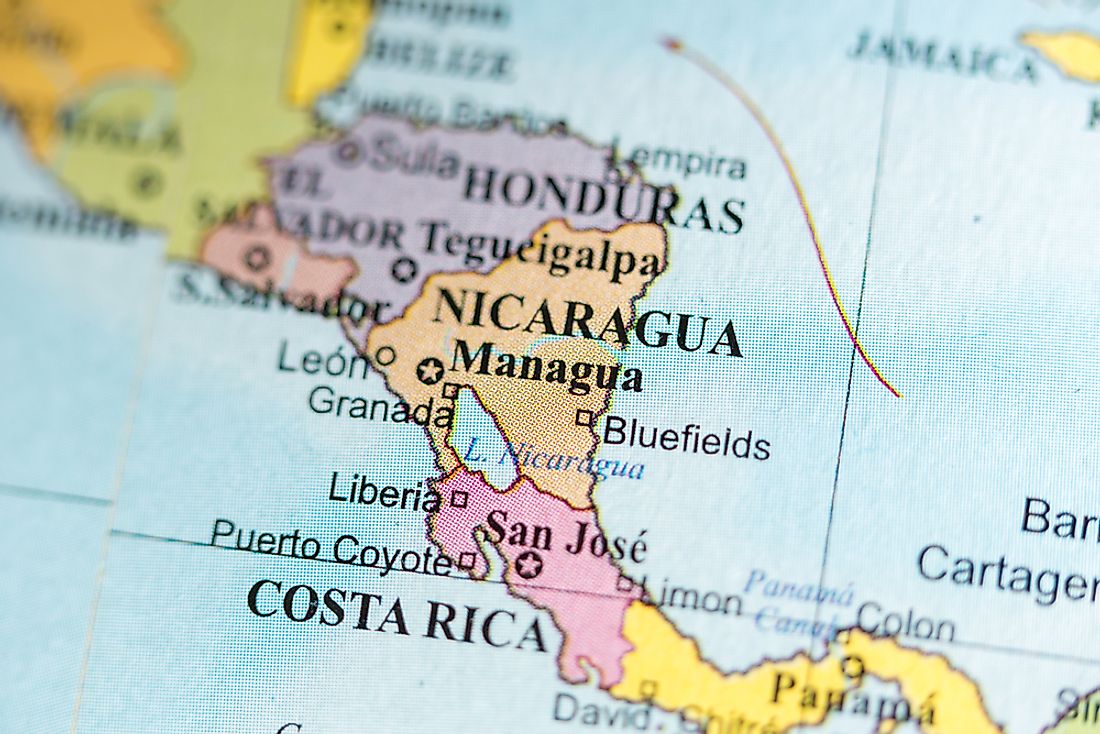Who Were The Contras Of Nicaragua?

The Nicaragua contras were right-wing rebels who opposed the socialist "Sandinista" government that was active in Nicaragua from 1979 until 1990. They included the Nicaraguan Democratic Force (Fuerza Democratica Nicaraguense or FDN). In 1979, President Anastasio Somoza DeBayle, the dictator of Nicaragua, was overthrown by the socialist Sandinistan National Liberation Front. Somoza escaped to Miami, Florida, U.S.A., which ended his rule in Nicaragua. The government of the Sandinista was not readily accepted by the people, although it made some progress in rehabilitating the people's plight against poverty and involving them in the political process. Meanwhile, the former national guard of Somoza had started to regroup, and allied themselves with other opposition organizations with the aim to topple the new socialist government. The US government got into the picture, and funneled funds to help this so-called opposition, which collectively came to be known as the Contras.
4. Military Campaigns
The Contras were a coalition of several right-wing rebel groups. The largest of them were the Nicaraguan Democratic Force, the Democratic Revolutionary Alliance (ARDE Frente Sur), the Sons of Mother Earth (YATAMA), and the Misura. These rebel groups combined to become the Nicaraguan resistance, or Contra. In 1982, the Contras carried out assassinations of government officials, and blew up several strategic bridges as well. They also planted mines in Nicaragua's piers to prevent arms shipments to the docks. They also started a civil war campaign along Nicaragua's Costa Rican border and in Atlantic coastal areas. At this time, Guatemala and El Salvador were having their own civil wars as well. The year 1983 brought a huge success to the efforts of the Contras, with U.S. CIA assistance, as the government's economic and transportation infrastructure were severely affected. By 1986, the Contras had enough funding to support their activities in both the north and south of Nicaragua.
3. U.S. Backing and Controversies
The US had from the start supported the Contras, who were remnants of Somoza's National Guard. At the beginning of the civil war against the socialist Sandinista regime in Nicaragua, two US Presidents secretly funneled funds to help the Contras. At one point upon discovery of this scheme, the US Congress stopped the funding. President Reagan then asked for donations from Taiwan and Saudi Arabia, who were happy enough to donate to the cause. Later, the US Congress relented, and a $100 million USD was sent as humanitarian aid to the Contras. Unknown to many, Reagan had earlier used money from drug trafficking and arms deals with Iran to assist the Contras, resulting in what came to be known as the "Iran-Contra Affair".
2. 1990 Decline of the Sandinista
In 1984, there was a lull in the fighting, at least long enough to call for an election between the Sandinista government and the Contras. Then, President Daniel Ortega won this election with a 66.97% majority vote. Throughout all of this, a peace agreement was also in the works between the Sandinista government and the Contras, with a summit meeting being attending by five standing Central American Presidents. The civil war that continued had caused about 50,000 deaths and around $12 billion in property damages. The guerilla war against the Sandinista government continued nonetheless, with still more funding being received from the US, which ultimately facilitated the assassination of 50 Sandinista political candidates. Then, in 1990, as mandated by the 1987 Constitution, an election was held which saw the defeat of then-President Daniel Ortega, and victory by Violeta Chamorro of the Democratic Union of Liberation.
1. Contra Legacy
After the rise of President Chamorro, Ortega kept his position as head of the Sandinistan National Liberation Front. President Chamorro kept Ortega's brother, Humberto, as her confidant, and he remained head of the Sandinista Army. There was no private property confiscation, as the Sandinista leaders were allowed to keep their vast collection of properties. Rumors circulated that the only reason why Chamorro won was that the people were tired of the Contras and the civil war. It was also claimed that Ortega still had a very strong presence among the student groups and the labor unions. Some prominent Sandinista leaders also resigned due to internal squabbling, with Ortega remaining at the top leadership of the party. In November of 2006, Daniel Ortega was elected again as President of Nicaragua, and started his campaign to end poverty and hunger in his country. The Sandinista socialist Ortega is still the incumbent President of Nicaragua as of April of 2016.











